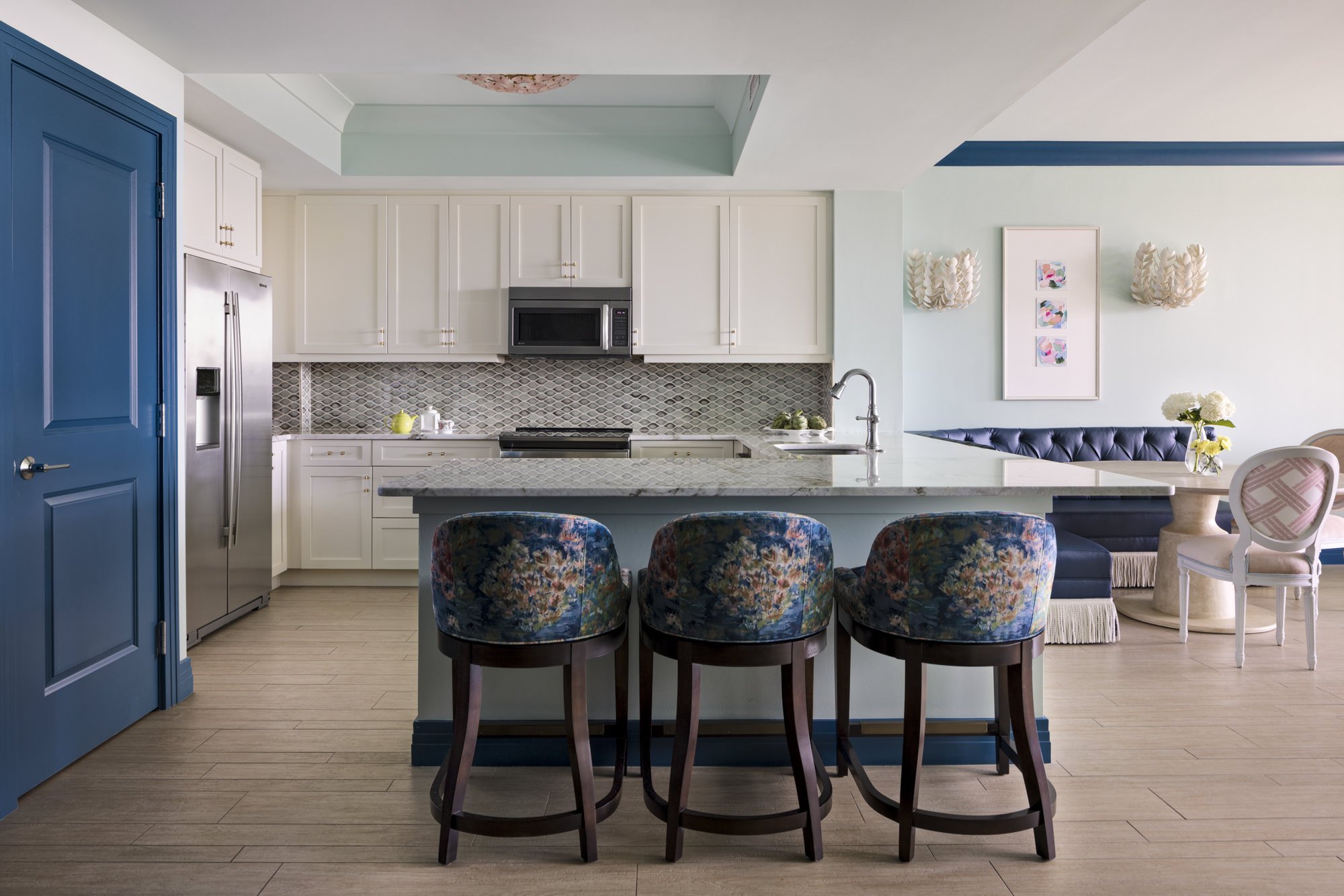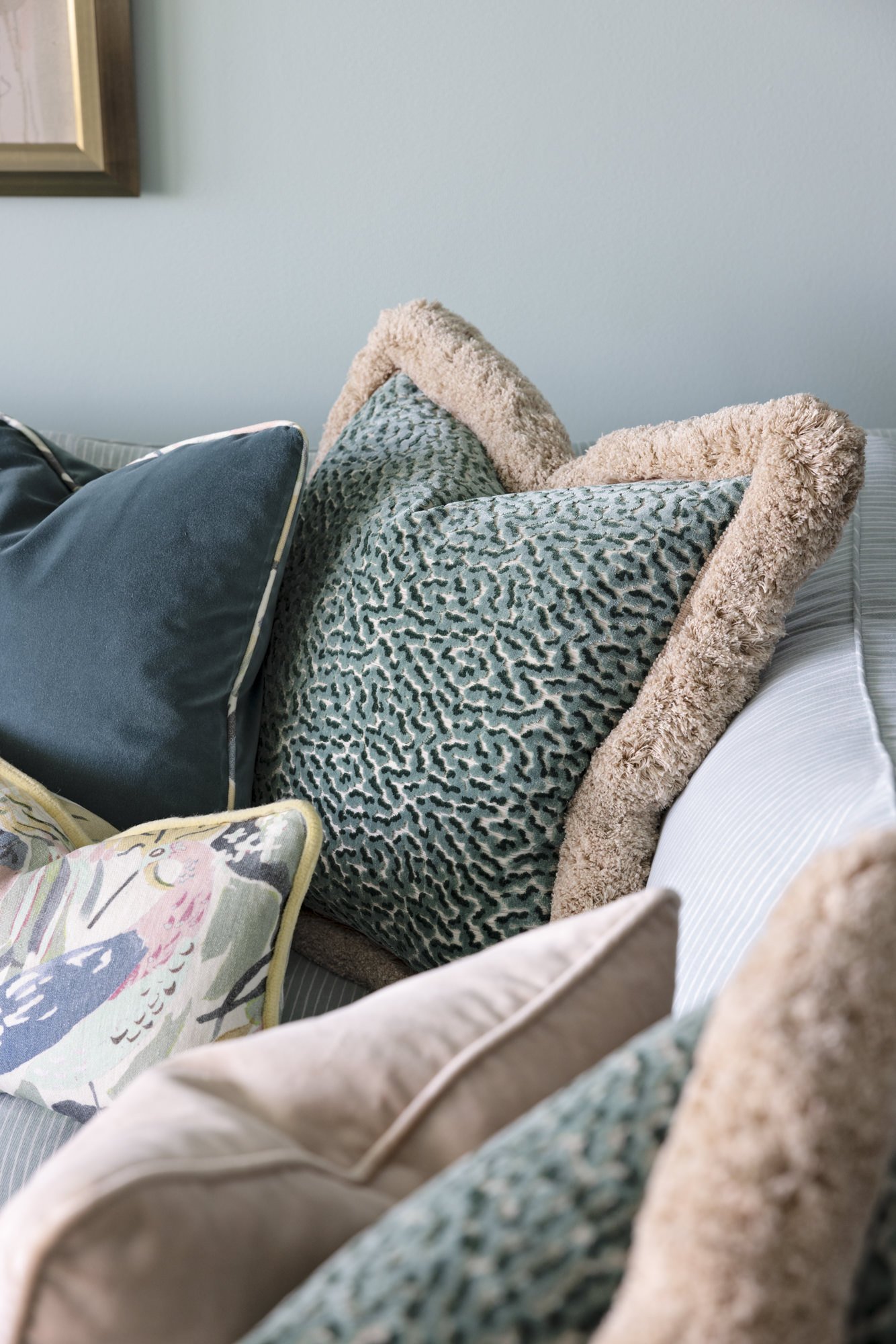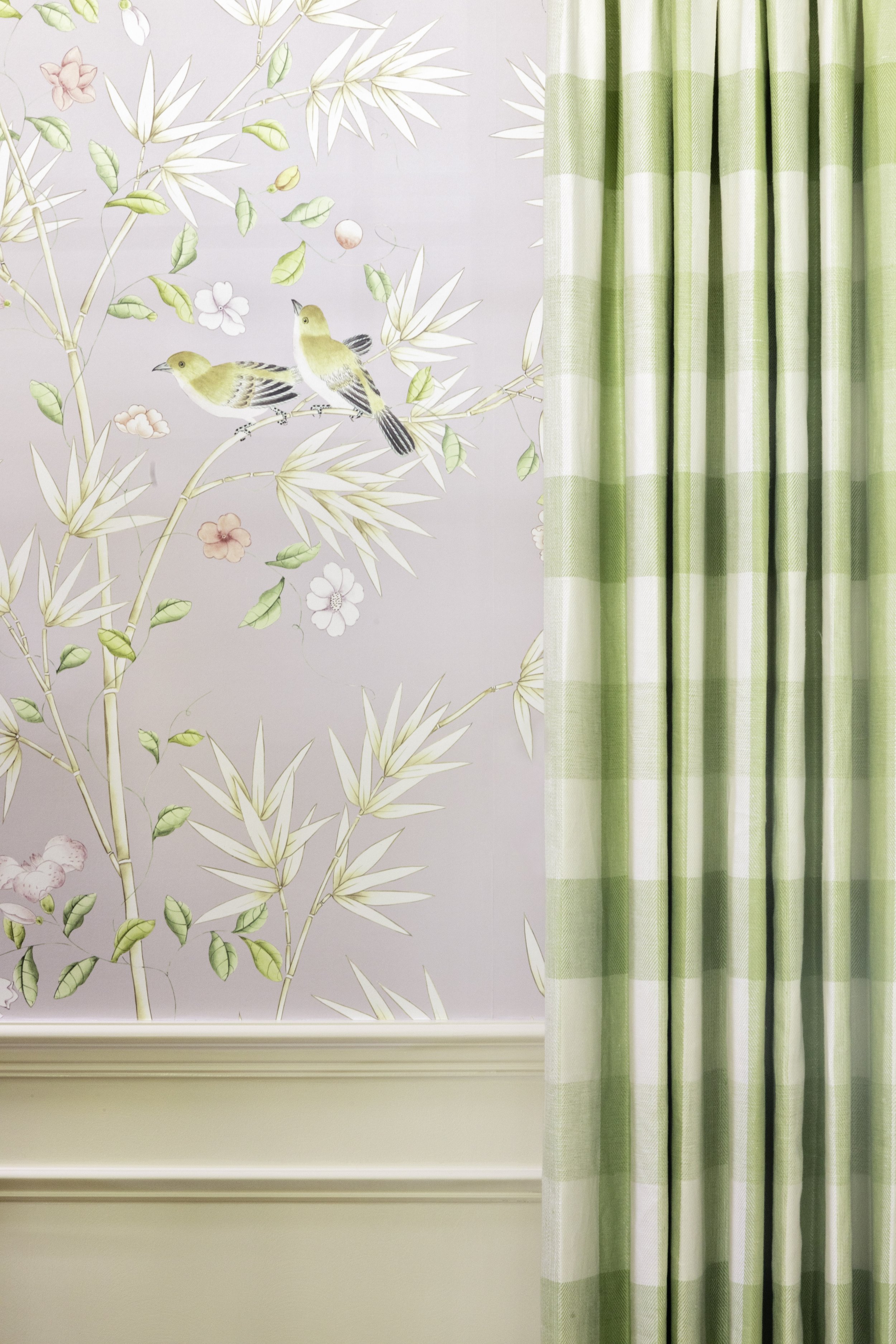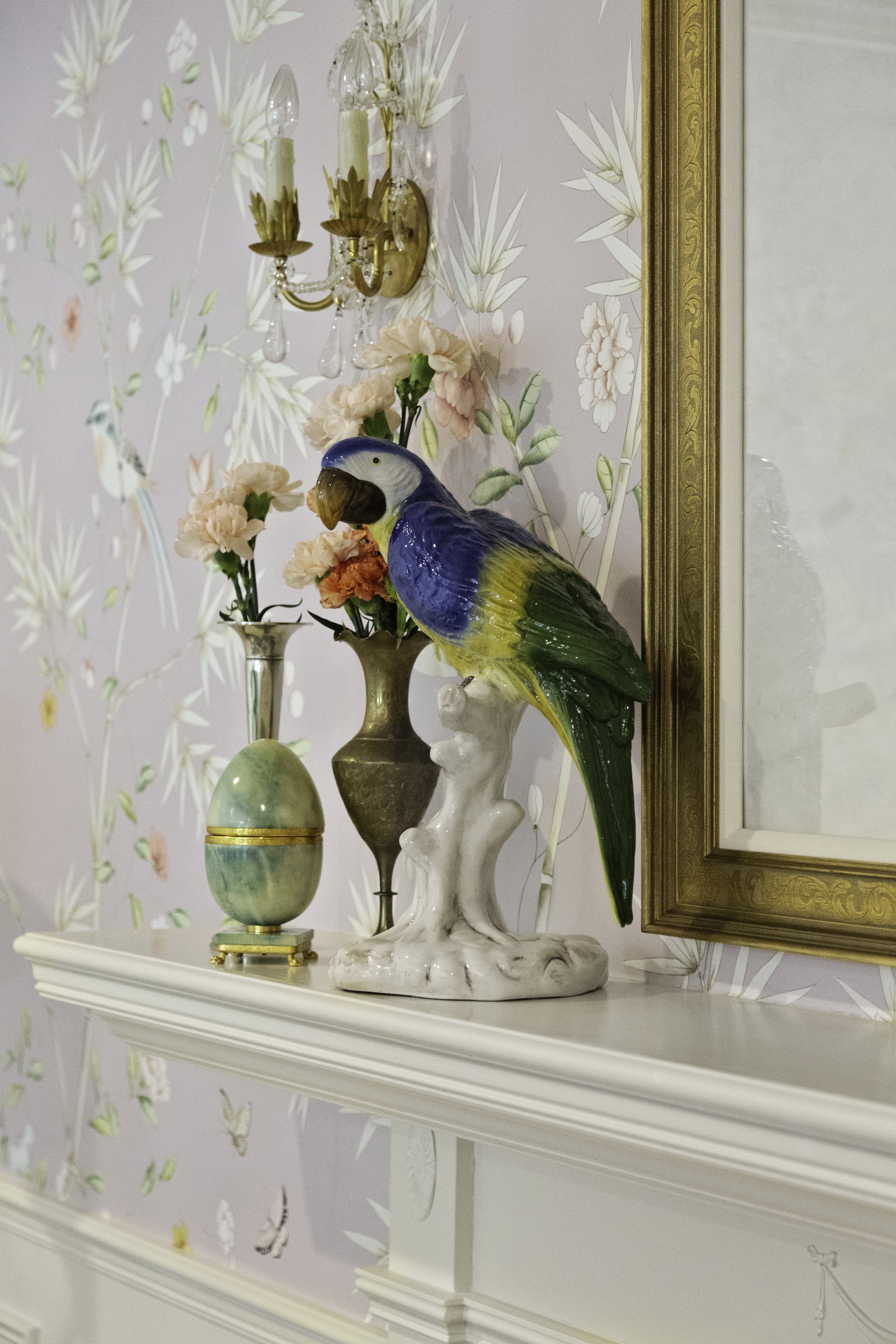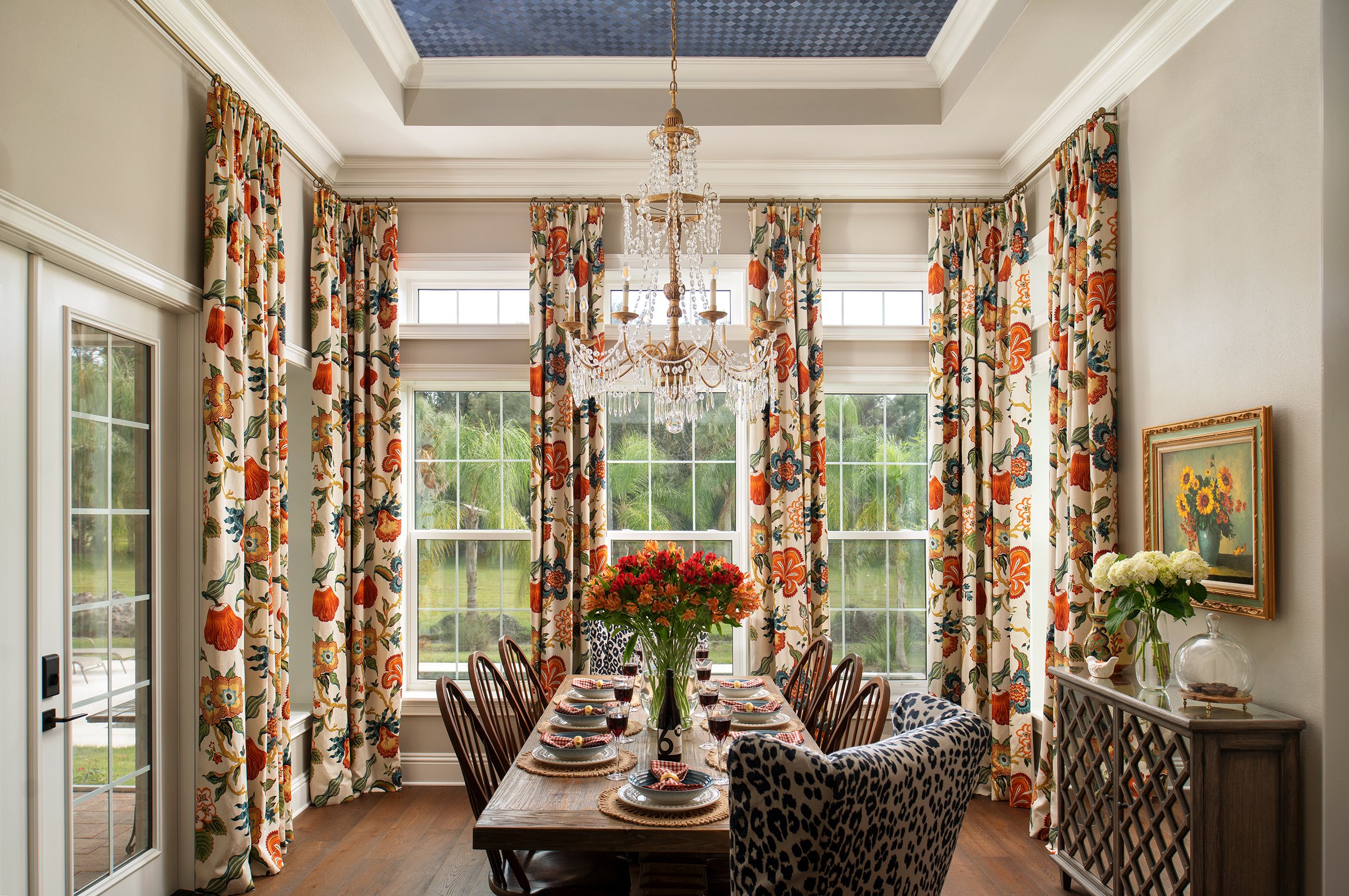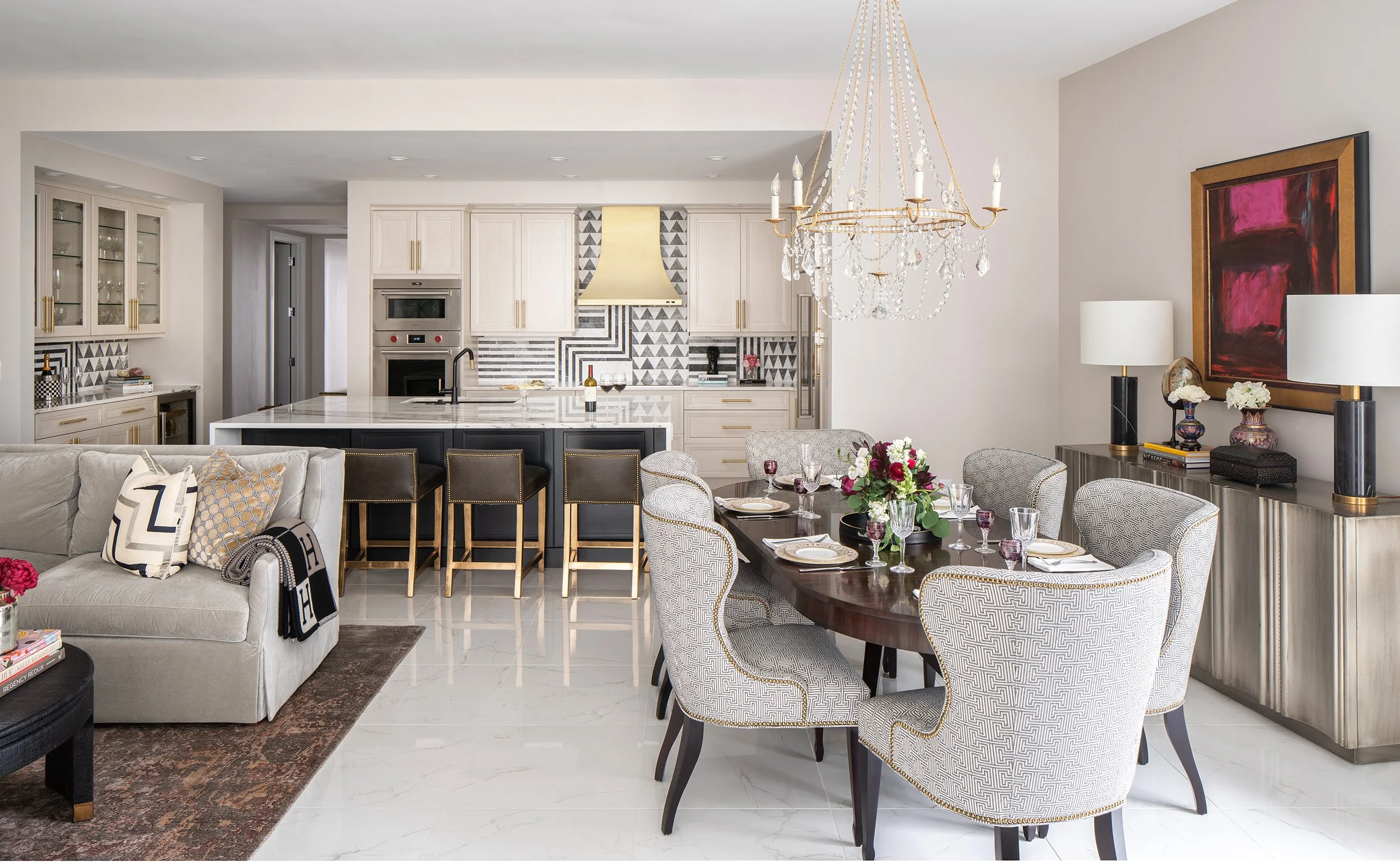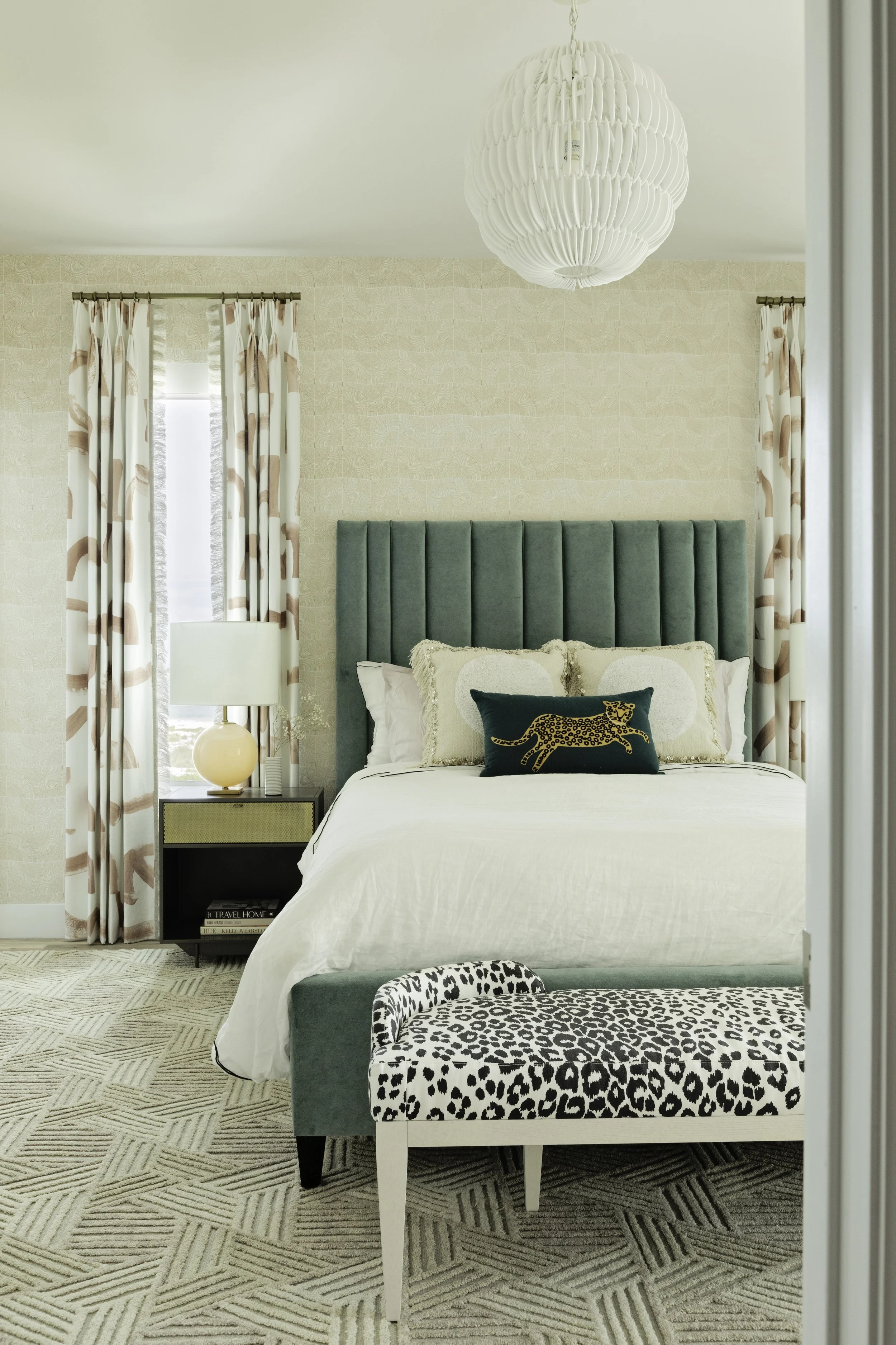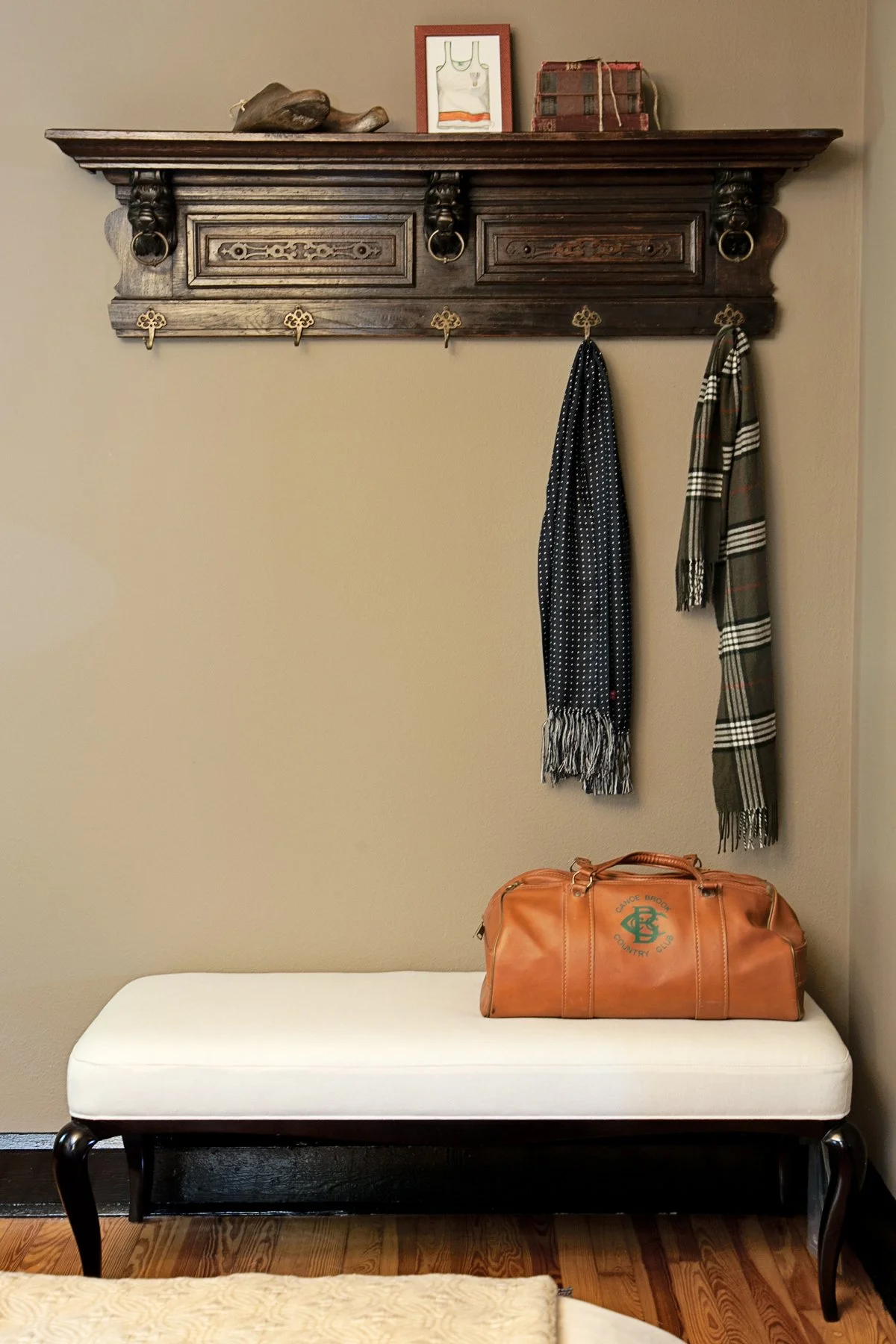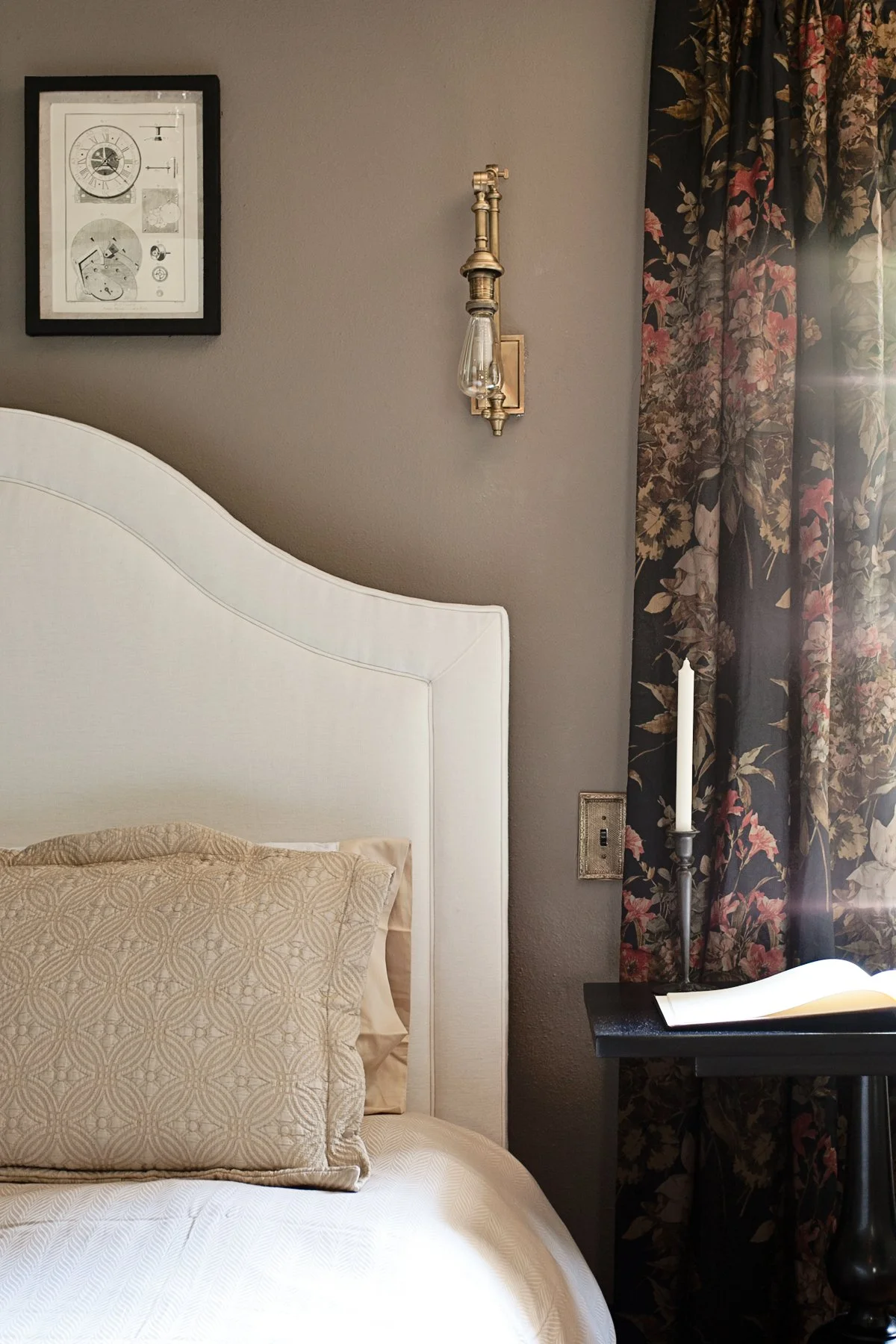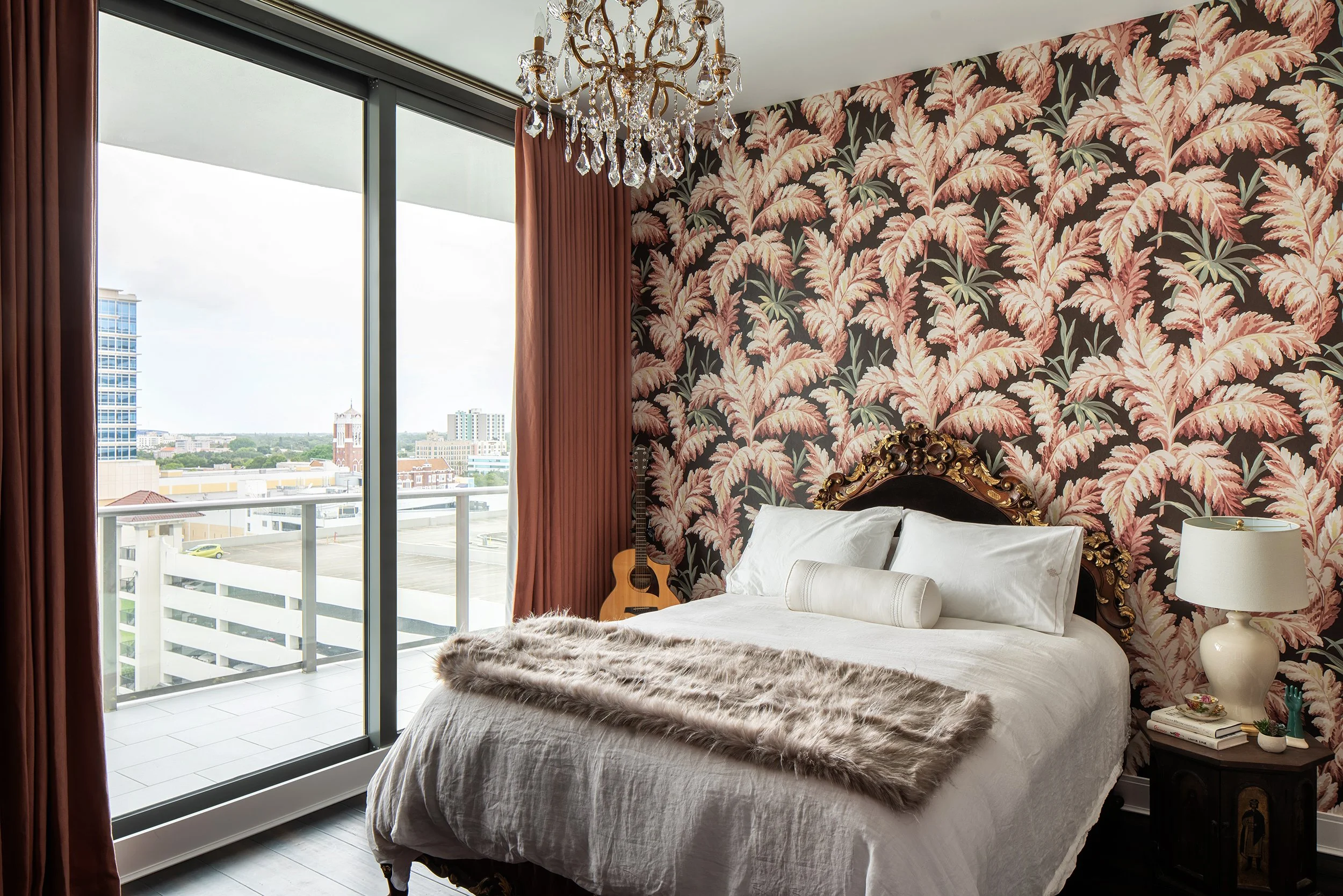Coastal Florida Beach Condo in St. Petersburg
Hey there! Ever bought a place that just didn’t vibe with your style? Yeah, been there. Our clients snagged a Florida beach house in Snell Isle, but it was, well, not their vibe at all. Enter Lisa Gilmore Design to the rescue!
Before and After: Lisa Gilmore Designed-Florida Beach House
Picture this: a retired couple dreaming of a beach escape, but the condo they bought didn’t match their coastal dreams. They craved an elevated space with blues that didn’t scream "seashells."
Let’s dive into the makeover journey!
Neutral Den Becomes Tropical Blue Retreat
The den? A jack-of-all-trades but master of none. We waved our magic wands (well, paintbrushes) to transform it into a tropical oasis. The vintage chest that we had handpainted locally served as an inspiration and focal point for this room. Don’t miss the leopard print sofas and chandeliers that make you go "Wow!"
DEN BEFORE
DEN AFTER | LISA GILMORE DESIGN FLORIDA
DEN AFTER | LISA GILMORE DESIGN
KITCHEN BEFORE
Lackluster Kitchen to Colorful Heart of the Home
The kitchen was meh, but we wanted it to be the heart of the home. But Lisa Gilmore Design doesn’t do standard or lackluster. We swapped the original tile for cracked glass tile, added a striking light fixture, and replaced the countertops with natural quartzite stone. And our favorite part– the Monet-inspired counter stools. Now, it's a vibrant spot for culinary adventures!
KITCHEN AFTER - LISA GILMORE INTERIOR DESIGN FL
Bland Dining Room Becomes Traditional Florida Beach House Delight
Who wants a snooze-fest dining room? Not us! Lisa jazzed it up by custom designing this luxe banquette and having it locally made for the space. We paired the banquette with chic sconces and a dining set for pure elegance.
(If you want to see a completely different vibe in the neighborhood, check out this dining space we also designed in Snell Isle.)
DINING ROOM AFTER | LISA GILMORE DESIGN ST PETERSBURG
DINING ROOM BEFORE
Beach Condo Living Room Spotlights View
Let’s talk views! We kept the spotlight on that breathtaking scenery while adding depth and structure to the living room. This beautiful sofa, statement drapery, and water lily art steal the show!
LIVING ROOM BEFORE
LIVING ROOM AFTER | LISA GILMORE DESIGN
LIVING ROOM AFTER | LISA GILMORE DESIGN TAMPA
Don’t miss the custom elements that Lisa designed and had made locally, including the pillows, ottoman and built-in. What a dream!
LIVING ROOM DETAILS | LISA GILMORE DESIGN
FABRIC SELECTION | LISA GILMORE DESIGN
Primary Bedroom Becomes Coastal Sanctuary
Blank canvas? Not anymore! We splashed shades of blue and green and turned it into a coastal haven fit for royalty. The luxe bed, eye-catching drapery, and colorful chandelier are certainly standout pieces. And the leopard rug from our own Lisa Gilmore Design collection really makes a splash!
PRIMARY BEDROOM BEFORE
PRIMARY BEDROOM | INTERIOR DESIGN LISA GILMORE
PRIMARY BEDROOM AFTER | LISA GILMORE DESIGN
A Florida Beach House Guest Room Fit for a King or Queen
The guest room needed some love. We added a plush royal blue bed, bold drapery in a traditional pattern, and nightstands for an overall effect that whispers, "Relax and stay a while." It’s calming and invigorating all at the same time.
Check out this post to see 4 things every guest room should include.
photo Guest Room Before
FAQs
1. What style of home is a Florida beach house?
When it comes to Florida beach houses, you’ve got options! Think traditional coastal vibes, contemporary twists, Mediterranean flair, or cozy bungalow feels. Fun fact: St. Petersburg’s style takes inspo from Perry Snell’s 1920s creations, featuring lush gardens and those iconic red-tiled roofs.
2. What should a luxury Florida beach house have?
Get ready for some beachside bliss! A luxury Florida beach house should be equipped with all the goodies to make your seaside stay unforgettable. Think beach access, outdoor showers for sandy toes, plush beds and linens for dreamy nights, a stocked kitchen for culinary adventures, plus outdoor toys like kayaks and paddleboards for fun in the sun. Oh, and don’t forget the outdoor bar, hot tub, and smart home tech for that extra touch of luxury!
3. What is the best color for a traditional Florida beach house?
For a traditional Florida beach house vibe, think serene shades of blue and green that echo the ocean’s hues. You can’t go wrong with classic whites, creams, or soft beiges either. Don't feel limited with this palette; you can also be inspired by the cotton candy skies and do warmer pink and corals. This coastal condo project is a great example of that.
This before-and-after traditional Florida beach house transformation was pure magic. We mixed textures and patterns to create a space that feels like a posh hotel with a beachy twist. Now it’s your turn to dive in and create a home that reflects your style!
To get more tips, see our projects, and find ideas for adding liveable glamour to your home, follow me on Instagram or sign up for our newsletter.






